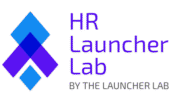
For small and scaling businesses, hiring a new team member is a big investment—one you can’t afford to lose. But the journey for a new hire doesn’t start on their first day—it begins the moment they accept your offer. This crucial period, known as pre-boarding, is your chance to set the stage for success by making them feel welcomed, valued, and fully prepared to hit the ground running. A successful pre-boarding process can be the difference between a new hire who feels excited and one who feels uncertain, leading to a strong start that benefits both the employee and your business.
Without a well-thought-out pre-boarding process, new hires can feel disconnected, anxious, and unsure about what lies ahead. This uncertainty can lead to slower ramp-up times, poor first impressions, and even early turnover—things that can be costly and disruptive for a small business. The pre-boarding phase is your opportunity to get ahead of these potential challenges by laying a strong foundation of communication, support, and readiness.
In this guide, we’ll show you how to design an effective pre-boarding experience that builds excitement, reduces anxiety, and ensures new hires are confident and ready to contribute from day one.
- Why Pre-boarding Matters for Small and Scaling Businesses
- Send a Personalized Welcome Email
- Prepare Key Documents and IT Setup in Advance
- Introduce Company Culture Early
- Offer Opportunities to Ask Questions
- Ensure a Smooth First-Day Transition
- Final Thoughts: Why Pre-boarding is Essential for Engagement
- Read More about Onboarding
Why Pre-boarding Matters for Small and Scaling Businesses #
Pre-boarding is often overlooked, but it’s a vital part of the onboarding process, especially for businesses looking to grow quickly. Small businesses in particular can’t afford to lose time to a sluggish start or a lack of clarity. Creating a structured pre-boarding experience ensures that your new hire feels part of the team from the get-go. It sets the tone for their entire experience at your company and can have a significant impact on retention, productivity, and morale.
For small businesses, every employee counts, and a delayed start or a poor first impression can have a big impact on the overall performance of your team. Pre-boarding helps new hires feel supported and welcomed, which in turn fosters loyalty and engagement. When you’re scaling your business, it’s even more essential. A positive pre-boarding experience helps you build momentum and allows new hires to settle in faster, reducing the typical adjustment period and ensuring they’re engaged and productive as soon as they begin.
Pre-boarding also helps address common anxieties that new hires might have. Starting a new job can be intimidating—there are a lot of unknowns, and people naturally feel anxious about fitting in and meeting expectations. By offering a structured and supportive pre-boarding process, you help alleviate these fears, ensuring that your new hires are comfortable, informed, and ready to start contributing on day one.
Disclaimer #
The information on this site is meant for general informational purposes only and should not be considered legal advice. Employment laws and requirements differ by location and industry, so it’s essential to consult a licensed attorney to ensure your business complies with relevant regulations. No visitor should take or avoid action based solely on the content provided here. Always seek legal advice specific to your situation. While we strive to keep our information up to date, we make no guarantees about its accuracy or completeness.
This content may contain affiliate links, meaning we receive a commission if you decide to make a purchase through our links, at no cost to you.
For more details, refer to our Terms and Conditions.
